Layer 2’s and the DANGER to BTC Mining | Hashpower Academy
Welcome to Hashpower Academy, where we tackle Bitcoin’s big shifts. In “Layer 2’s and the DANGER to Mining,” we dig into how L2s reshape mining’s role—and its risks.
What’s Covered:
Mining 101: Produces L1 block space, earns fees from it.
Layer 2 rise: Lightning, Liquid move settlement off L1 for speed.
Efficiency gain: L2s boost volume—less clog on L1.
The danger: Fewer L1 fees threaten miners’ income.
Settlement link: L2s still need L1 block space to anchor.
Key Insights:
Miners’ lifeline: L1 fees drop as L2s handle more txns.
L2 reliance: Lightning and Liquid lean on miners’ blocks.
Tension point: Settlement ties L1 and L2—miners stay vital.
Risk vs. reward: Mining’s future hinges on L1’s role.
Why Watch:
See the tug-of-war between L2 efficiency and mining profits.
Grasp how Bitcoin evolves—and who pays the price.
Join Hashpower Academy to uncover L2s’ impact on mining—watch now and see the stakes!
Financial Disclaimer:
This video serves educational and informational purposes only and should not be construed as financial advice or investment recommendation. The views expressed are those of the presenter and do not represent Hashpower Academy’s official stance. Information is provided ‘as is’ without warranties, express or implied, as to its accuracy or completeness. Engaging with Bitcoin involves high risk, including potential financial loss, market volatility, and energy costs, and is suitable only for those who can bear these risks. Always conduct your own research and consult with a qualified financial or technical advisor before making decisions related to Bitcoin.
#Bitcoin
#Layer2
#BitcoinMining
#LightningNetwork
#LiquidNetwork
#Mining
#BTC
#BlockSpace
#Crypto
#L2Bitcoin
#MiningFees
#BitcoinLayer2
#LightningBTC
#LiquidBTC
#Blockchain
#BitcoinTech
#CryptoMining
#L1vsL2
#BitcoinSettlement
#MiningRisk
Video Transcript:
hello there and welcome to the hash power Academy my name is Jake scanland and here at the Academy we learn anything and everything about Bitcoin and its underlying network but in this topic we’re going to go upwards but to start we start from the bottom and the context of this conversation is to delve into the future of mining the risks and the worries about the amount of subsidy per block in Decline and the amount of fees per block needing to increase as the income for miners and we start with the energy sector because this is the cost side of Bitcoin mining it is their input and it’s the input to the Bitcoin Network so Bitcoin mining Hardware consumes electricity from the energy sector the compute sector producing compute power hash power and hash power finds the next block in the chain and the blockchain is where all the rules for Bitcoin come into play that layer twos are looking to shall we say escape from that is to say that Bitcoin blocks come every 10 minutes approximately but if you were going into a into a shop and trying to buy a coffee you wouldn’t want to wait 10 minutes for your uh settlement of of a transaction and if millions of people are all buying coffee there is not enough transaction space in those blocks and so we have base layer one Bitcoin units of well BT TC but there are also people developing layers so new forms of layers on top of Bitcoin that use the security of Bitcoin and its proof of work model as as those fundamental foundations which is the right way to go about things in the context of allowing a wider poll of people to trade transact in Bitcoin but what’s happened over time before we had uh highly adopted layer 2os was well when there’s lots of transaction demand and limited space for transactions to be stored the fees in which people have to pay to access settlement right now as in within the next 10 minutes versus if you try and pay a lower fee your Your settlement of your transaction isn’t stored in space a block but it’s stored in time and this is where the mempo kicks in it’s a place in which nodes are tracking all of the different transactions that are requesting to be added to the blockchain and they’re essentially categorized based on the willingness to pay a fee the highest fee paying transactions will probably get into the next block and so that communication between the mining layer and the layer twos is fundamental the piece in the middle is settlement the settlement space is limited in in storage size the amount of data and so layer twos offer efficiency and what happens is is that efficiency is traded for fees going to the layer 2 layer and layer 2 nodes earning those fees but those fees might not necessarily make their way to the miners because what’s happening is there’s going to be an ever increasing amount of data the higher you go up in the layers but it also constrains the amount of fees in Bitcoin terms going to the lower layers of the network and you have to pay miners but the the debate right now as to all the different ways of providing income to miners from my perspective there is several different income streams from all these different layers for miners but mining is going to be a fundamental part of the discussion before the dollar during the dollar and after the dollar in terms of Bitcoin and so looking at how layer 2os race to ensure that you can pay someone near immediately pay a small fee and every now and again access the layer well the layer two has all the settlement of your transaction for convenience but those Layer Two the amount of Bitcoin in the layer two in reference there are still IUS just remember that the layer twos have to reference and settle eventually on the layer one so the frequency in which transaction optimization Finds Its way to the layer one where those fees are paid two miners well that’s the big question looking forwards and that is to say that the most valuable commodity to any layer 2 is Hash power banking Finance any form of institution that wants to use layer one block space you either pay to play which is paying Bitcoin to access block space or you produce it yourself with hash power from the mining side and so I always find that anything to do with uh the the expression of Bitcoin in financial terms and that demand for a place to settle transactions but the final record of information of how much was sent to whom well that all comes from the mining side and so mining is always going to have an important discussion when discussing any new updates to the Bitcoin chain and impro improvisations and and different layers that abstract away from the rule structure which is 10minute blocks and certain amount of storage space per 10minute period all of these things come uh together to say that it’s inevitable that the amount of subsidy per 4year period is getting cut in half cut in half cut in half right with not too good drawing and the amount of fees let’s just put it in Black the amount of fees are going to be minuscule but they increase eventually think of these as the fouryear cycles and we’ll have a point in which fees per block is more than the 50% than the subsidy per block and that point in which subsidy drops below as a percentage of total block rewards than fees I believe that would be the turning point in which not just Bitcoin unit of account and medium of Exchange fundamentals really kick in and we move away from store at Value but also in terms of layer twos these layer tws have got to really offer uh just as much competitive value in comparison to their their connection to other different markets as well and what I mean by that is uh the pricing system right now of Bitcoin in of itself is well fees right now uh are barely a fraction of the total block rewards to Miners And so subsidy is buying Bitcoin miners time but subsidy is issuing that full 21 million Supply on the fee side of things fees represent some form of economic activity and that economic activity whether it’s a convenient amount of large you know high volume of transactions in a layer two with some form of regular settlement rate in to layer one where those fees are paid but if block space is constrained by such a small amount of data there is going to be an inevitable path where it’s about transaction optimization net settlement which is to say that if let’s just say there’s two Bitcoin banks in the future and they operate some form of layer two to communicate uh transactions between these two Banks let’s say at the end end of a certain day let’s say they do they try and do once a day settlement to the layer one if bank number one sent 100 bitcoins worth of of Bitcoin on the layer two to bank number two and bank number two only sent 20 Bitcoin in settlement to the others they would just perform a net settlement of 80 in the middle and that net settlement would be in the layer one blockchain but that still doesn’t pay the miners and and reduces the amount of fees that they could potentially earn but that that interplay of security and fees is is the is the clear correlation layer one block space is absolute Tru because a network of gwatt of power is securing that block space layer twos are just as secure as whoever offers the layer two the decentralization of the nodes of that layer two or if it’s a federation the security of the Federation so everything is this interplay of security efficiency accessibility to other markets in terms of bitcoin’s medium of exchange fundamentals there is a lot to this but I do believe that compute power is going to have one of the biggest components of that discussion because it because it’s the commodity that produces block space and yeah I I the long-term path for that is not absolutely clear but I have a few ideas I’ll leave it there I hope this was an interesting video uh I’m not too worried about when subsidy drops below fees because miners have access to different income streams such as selling power back to the grid so the energy can flow from buying energy to selling Bitcoin producing it or selling the energy and buying Bitcoin so the energy can flow either way around the network and it’s essentially a a basic circuit through the internet and through the electrical grid and that that sort of two-way direction of things makes it different to say gold mining where with gold mining you have a cost of processing load of rock to to extract a quantity of value but it doesn’t go the other way you can only the rock cannot be sold for its gold value it’s it doesn’t work like that but Bitcoin does and so so miners that innovate on the energy side will have the best chance but even if fees decline what happens is inefficient miners switch off so if inefficient let’s say half the network were inefficient and switched off because really low fees the other half of the network the efficient ones the efficiency survives basically and so we will never reach a point where there is zero mining in fact there will be a lot of people that can drive their cost of mining to zero because if they’ve already deployed energy production and price themselves into paying for it um they can accumulate Bitcoin at a rate that people depending on buying electricity from some from a grid they will not be able to achieve those same sorts of economic results and so efficiency wins here it’s meritocracy in its purest form which is to say that those most efficient with their energy will account the most SATs and layer twos just Express even further with higher efficiency on the consumption side of things so that duopoly of energy and finance as I said computes in the middle and compute is always part of that conversation as the producer The issuant Power Within all the different components of the Bitcoin Network I hope this was an interesting video I hope to see you in the next one goodbye


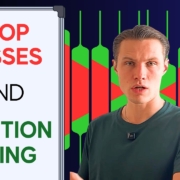
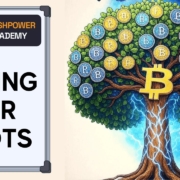
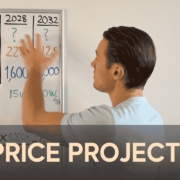
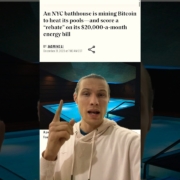


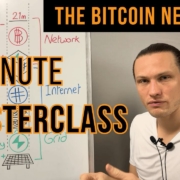
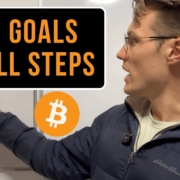
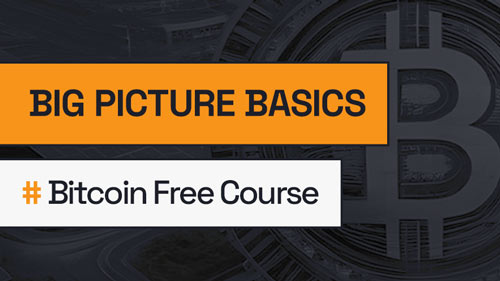



Leave a Reply
Want to join the discussion?Feel free to contribute!